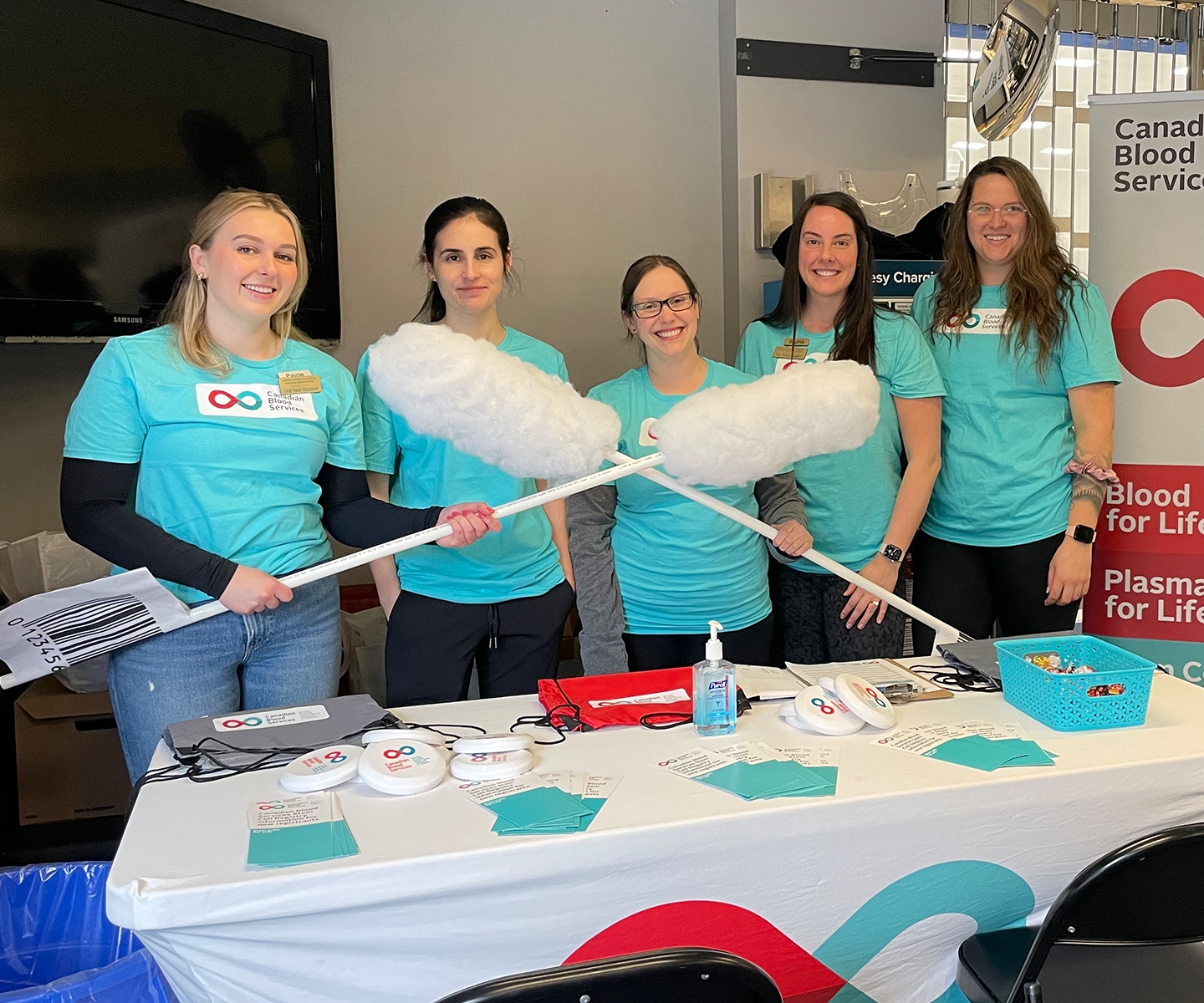Thousands of students grow stem cell registry by swabbing at school

“We just want to save lives.” Students across Canada join the stem cell registry
At any given time, there are about 1,000 patients in Canada waiting for a lifesaving stem cell transplant. But first, they need to find a matching donor through the Canadian Blood Services Stem Cell Registry.
A recent Canadian Blood Services campaign provided a boost of hope to patients seeking their lifesaving match by adding thousands of eligible people to the registry.
The “Swab at School” campaign aimed to recruit potential stem cell donors from post-secondary campuses across Canada for two weeks in February. At the 86 recruitment events for the campaign, students were asked to swab their cheeks on the spot and register online (the first step to becoming a potential stem cell donor), or they could take a swabbing kit with them to register at home.
“Being a part of the campaign was not only exciting but heartwarming as well. I was genuinely blown away by the turnout at our events and how motivated our student volunteers were to make a huge impact during these two weeks,” says Ravneet Panglia, a community development manager with Canadian Blood Services. “Once informed about the dire need to grow the stem cell registry — and the fact that they would be contributing to a nation-wide campaign to help save lives — students were all ears! All in all, this was such a great experience. Knowing that we truly do make all the difference, well, that feeling is unmatched!”

What are stem cells?
Stem cells, specifically blood stem cells, are immature cells that can develop into any cell present in the bloodstream. Stem cells can be used to treat more than 80 diseases and disorders, many of them life-threatening.
Learn more about donating stem cells.
The “Swab at School” campaign focused on students because people ages 17 to 35 give patients the best outcome after transplant. When a patient undergoes a stem cell transplant, it's often their last hope for survival.
To register, students were asked to spend a few minutes answering questions online, then swab their cheeks to collect a sample.

“It was really easy and quick,” said Isabel Kleinbub, a student at the University of Ottawa, who recommends others join the registry. “It will take 10 minutes and save lives.”
“We just want to save lives and make an impact,” said Hanvitna Bosigari, another student at the University of Ottawa.
What happens after you register to become a stem cell donor?
Once the swab samples are returned to Canadian Blood Services, they are then processed for Human Leukocyte Antigens (HLA) typing (genetic testing). This testing is important as HLA are important when matching a patient to a donor — the closer the match, the better the outcomes. Some HLA occur with varying frequency in different ethnic groups, which is why an ethnically diverse donor registry is vital.
After the HLA typing is complete, the registrant is added to the Canadian Blood Services Stem Cell Registry and notified by email. Our registry is part of an international network of registries made up of more than 80 participating countries and over 40 million donors from around the world.
If the registrant is matched with a patient, they’ll be contacted, and the donation process begins.
Learn how stem cell donation works
How to host your own stem cell registry recruitment drive
Interested and inspired to host your own stem cell recruitment event? Canadian Blood Services provides free supplies, templates and support to help you host an event where people can join the registry and have their cheek swab completed onsite.
Your event could be a turning point that matches a patient in need to their stem cell donor.
Find out how on our recruitment resources page.
Young adults between the ages of 17 and 35 can bring hope to patients by joining Canadian Blood Services Stem Cell Registry. Check your eligibility and register online at Blood.ca/Register4Stem


